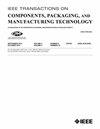Fusion Neural Networks for High-Precision Design and Ultrawideband Shielding in Frequency Selective Surfaces
IF 2.3
3区 工程技术
Q2 ENGINEERING, ELECTRICAL & ELECTRONIC
IEEE Transactions on Components, Packaging and Manufacturing Technology
Pub Date : 2024-12-16
DOI:10.1109/TCPMT.2024.3517666
引用次数: 0
Abstract
This article advances a multi-input multi-output regression approach for continually optimizing the physical design of frequency selective surfaces (FSSs) to enhance shielding effectiveness (SE) over an ultrawide bandwidth. The classical models of neural networks (NNs) are frequently used for such regression tasks due to their capacity to extract features from average datasets; however, they struggle with complex design parameters and broad responses. To accomplish this, a hybrid NN technique is developed, which combines convolutional neural networks (CNNs) for deep feature capture with long short-term memory (LSTM) networks and an attention mechanism for processing. This method makes efficient use of linear information in design dimensions while also consistently computing S-parameters. The FSS design employs a double square loop that resonates at two frequencies, resulting in a wideband response; by adding four stubs between the loops, it becomes an ultrawideband (UWB) response. The equivalent lumped circuit (ELC) model is applied for estimating capacitance (C) and inductance (L), which are then transformed to ABCD and S-parameters. The model obtained an融合神经网络用于频率选择性表面的高精度设计和超宽带屏蔽
本文提出了一种多输入多输出回归方法,用于持续优化频率选择表面(FSS)的物理设计,以增强超宽带屏蔽效果(SE)。神经网络(NN)的经典模型由于能够从平均数据集中提取特征而经常被用于此类回归任务;然而,它们在处理复杂的设计参数和广泛的响应时却显得力不从心。为此,我们开发了一种混合神经网络技术,它将用于深度特征捕捉的卷积神经网络(CNN)与用于处理的长短期记忆(LSTM)网络和注意力机制相结合。这种方法既能有效利用设计维度的线性信息,又能持续计算 S 参数。FSS 设计采用双方形环路,在两个频率上产生共振,从而产生宽带响应;通过在环路之间添加四个存根,可产生超宽带 (UWB) 响应。等效叠加电路 (ELC) 模型用于估算电容 (C) 和电感 (L),然后将其转换为 ABCD 和 S 参数。在 124.25 秒内优化设计参数后,该模型获得了 99.3% 的 r^{2}$ 值和 1 \times 10^{-3}$ 的均方误差 (mse)。该设计在罗杰斯 5880LZ 上实现,厚度为 1.27 毫米,单元尺寸为 11 \times 11 毫米,在不同入射角下都很稳定,而且对偏振不敏感,因此可以缩小尺寸。对比研究表明,CNN-LSTM 混合模型超越了传统技术,具有更高的 SE。
本文章由计算机程序翻译,如有差异,请以英文原文为准。
求助全文
约1分钟内获得全文
求助全文
来源期刊

IEEE Transactions on Components, Packaging and Manufacturing Technology
ENGINEERING, MANUFACTURING-ENGINEERING, ELECTRICAL & ELECTRONIC
CiteScore
4.70
自引率
13.60%
发文量
203
审稿时长
3 months
期刊介绍:
IEEE Transactions on Components, Packaging, and Manufacturing Technology publishes research and application articles on modeling, design, building blocks, technical infrastructure, and analysis underpinning electronic, photonic and MEMS packaging, in addition to new developments in passive components, electrical contacts and connectors, thermal management, and device reliability; as well as the manufacture of electronics parts and assemblies, with broad coverage of design, factory modeling, assembly methods, quality, product robustness, and design-for-environment.
 求助内容:
求助内容: 应助结果提醒方式:
应助结果提醒方式:


